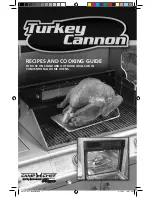
16
2.2.5.3
Contact (K1|K2) direction ([pnum] 63|83)
Description
The direction(s) for which the contact sequence will be triggered.
Notes
•
0: receding vehicles
•
1: approaching vehicles
•
2: bidirectional
2.2.5.4
Contact (K1|K2) minimum range (K1|K2) ([pnum] 64|84)
Description
Minimum range above what the contact sequence will be triggered.
Notes
2.2.5.5
Contact (K1|K2) maximum range (K1|K2) ([pnum] 65|85)
Description
Maximum range above what the contact sequence will be triggered.
Notes
2.2.5.6
Contact (K1|K2) sequence active duration ([pnum] 67|87)
Description
Minimum activation time of a contact in milliseconds
Notes
The meaning of active is determined by the
contact idle State
parameter.
2.2.5.7
Contact (K1|K2) idle state ([pnum] 69|89)
Description
State of the contact when there is no detection
Notes
•
0: Relay not energized
•
1: Relay energized
Advice - Good practices:
-
Don't forget to save the settings with
save
<CR>.
-
If, when the radar is powered and in “RS-232 configuration” mode ([pnum] 4, [value] 1), the position of one
of the encoder wheels is modified, the parameters programmed via RS-232 are erased and return to factory
values.
-
Do not forget to put the sticker on the front face of the radar (see Figure 6).
-
To keep track of the radar configuration:
o
Use the “chosen value” column of Table 2: description of the parameters.
o
Save your settings as a .txt file, using your terminal emulator.





































